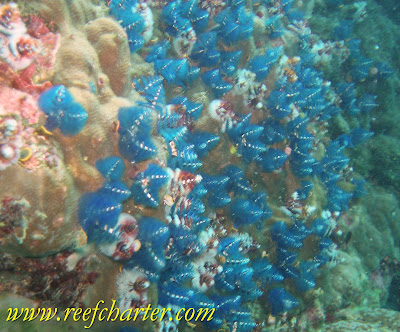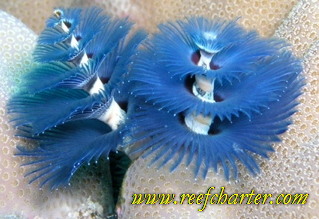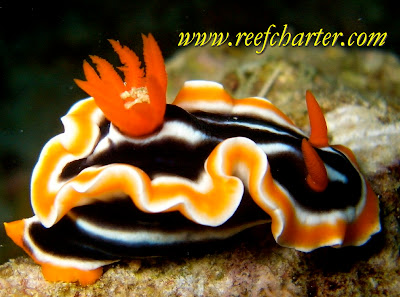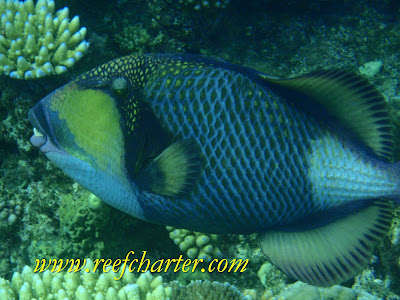Quick and Fast Facts
• The Great Barrier Reef is the largest structure built by living organisms on the Earth today.
• The Great Barrier Reef region is the world’s largest group of coral reefs.
• There are three main types of reefs found on the Great Barrier Reef: Ribbon, Platform, and Fringing reefs.
• Tiny masses of coral polyps are responsible for building coral reefs.
• Coral Reefs make up 6% of the entire Great Barrier Reef Marine Park by Area.
• Reefs are masses of limestone made from skeletons of millions upon millions of tiny marine animals and plants.
• Main threats to coral reefs include human activities, coral bleaching and crown-of-thorn starfish outbreaks.
The Continental Shelf provides the platform from which the reefs of the Great Barrier Reef develop. In the north, the continental shelf lies close to the coast and gradually widens as it extends south.
How Reefs Protect Themselves
Most reefs have a side protected from the prevailing wind and swell. The exposed face of a reef endures the constant battering of powerful waves generated by high winds. Here, corals and coralline algae grow and bind together to form the limestone breakwater of the reef behind which everything else is sheltered. In these sheltered areas, hard corals, soft corals, algae and sponges inter grow to form gardens that are home to thousands of species.
How Coral Reefs Form
Reefs are masses of limestone made from skeletons of millions upon millions of tiny marine animals and plants. Coral polyps, the main reef builders, grow in colonies on a reef’s surface. They extract dissolved limestone from the water and, with the help of single-celled plants (called zooxanthellae) living inside them, they lay it down as hard limestone around the lower half of their bodies. Over time, polyps slowly multiply to create a coral formation, which varies in size and shape depending on where it lives. People refer to these coral formations by their shape or appearance, for example, staghorn, boulder, vase and plate coral. As a coral grows, new polyps replace old polyps. When coral polyps die, their limestone skeletons and the remains of other animals and plants are added to the framework of the Reef.
Threats to Coral Reefs
Coral reefs in the Great Barrier Reef are under pressure due to a number of threats, from both human and natural impacts. Activities such as diving, boating, anchoring and fishing can affect reefs by damaging corals and impacting on other animals and plants.
Coral bleaching is a natural threat to coral reefs. It occurs when corals are over-stressed and can be caused by extreme sea temperatures, high levels of sunlight, low salinity, diseases, pollutants and exposure to air and rain at low tides.
Crown-of-thorns starfish can destroy entire reefs by feeding on coral polyps. Outbreaks occur and reefs are destroyed when the number of crown-of-thorns starfish on a particular reef is high enough that they are able to consume coral polyps faster than corals can grow.
Types Of Reefs
• Fringing reefs are coral structures that are attached to the mainland or to continental islands. In the Great Barrier Reef most fringing reefs are found around islands. Fringing reefs are probably the reef type most commonly seen by visitors.
• Platform reefs are also known as patch reefs and are scattered in the calm, shallow waters between the mainland and edge of the continental shelf. They are usually round or oval patches and often tend to be broken up.
• Ribbon reefs only occur in the northern part of the Great Barrier Reef. They form along the edge of the continental shelf and can grow so high they form narrow walls.
Category: Species-of-the-Reef
Christmas Tree Worms
In keeping with the season another part of the ecosystem of the Great Barrier Reef and one of my favourites is the Christmas Tree Worm. So name because of the shape of the extruding part of the worm. The trees are the mouths of the worm. Christmas tree worms feed primarily by filtering the food from the water around it. Each spiral is actually composed of feather-like tentacles which allows any prey that are trapped in them to be transported straight towards the worm’s mouth. they also use the trees as gills. Any sudden movement or sounds near the worm and it retracts immediately into it’s tube.
Nudibranch – Species of the Reef
One of the most brightly coloured species of the reef the Nudibranch, is a strange and beautiful creature. Nudibranch literally means “naked gill”. They have no hard bones or shells to protect their gills. They are often refered to as sea slugs, although a lot more beautiful then the commmon garden variety. They feed on soft corals and are immune to the toxins that some of these corals produce. They come in a large variety of bright colours and forms. these colours help them blend in with the corals in their surronding environment.
They have the sex organs of both sexes but do not normally fertilize their own eggs.
Trigger Fish – Balistidae
Triggerfish derive their common name from a stout first dorsal spine which can be locked into potion by a small second spine, looking like a trigger. The trigger is used by the fish to wedge themselves into coral crevices at night. They come in a variety of beautiful colors and patterns, making them something to behold. These fish are also characterised by a leathery skin and a small mouth with powerful, crushing jaws. But don’t worry they do not are not looking to you for a meal. However, sometimes they guard their nest as we guard our homes. Triggerfish feed on a wide variety of invertebrates including sponges, gorgonians, crabs, shrimps, molluscs and echinoderms. They are often seen head down ‘blowing’ water into the sand to excavate food. They swim by undulating the second dorsal and anal fins, bringing their tail into action only when speed is needed.




